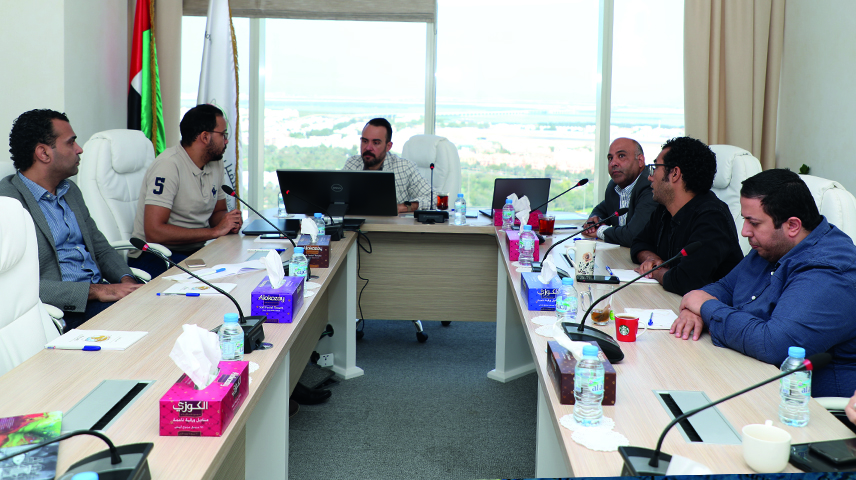Future for Advanced Research & Studies (FARAS) is shedding a spotlight on climate change as one of the most pressing issues on both international and regional agendas. FARAS strives to present unique perspectives, distinct from those of Western think tanks, by offering future scenarios and analyses that are both relevant and specific to the region. Recently, FARAS hosted a series of workshops, spanning over three days from February 20 to 22, 2023, focusing on climate change, building upon the Houston Framework in the field.
During the workshops, Dr John Sweeney, a future foresight consultant who has worked with many international institutions, including the European Commission and the United Nations, led the discussions and trained the center's research team to develop scenarios on climate change in the region. The discussions emphasized the application of strategic foresight and alternative exploration in dealing with future opportunities and challenges.
Steps
Climate change has become a prominent topic in strategic foresight applications, particularly for government institutions and organizations that aim to measure its impact. However, climate change foresight involves more than just technical details about rising temperatures; it also requires developing political, economic, and social alternatives that address the potential consequences of this phenomenon.
To anticipate the impact of climate change in the Middle East, a task force from FARAS utilised the University of Houston framework and conducted a practical exercise. The discussions resulted in the creation of an analysis framework consisting of the following steps:
1. Develop a domain map that outlines all the issues related to the phenomenon under study. In this step, databases and issues are built (Domain Map).
2. Create a preliminary and current assessment of the conditions (Current Assessment).
3. Connect the rising phenomenon to concrete evidence (signals) by conducting a survey of all evidence (Scanning), regardless of whether the evidence is weak or strong.
4. Use the "future triangle" tool to identify the basic drivers that influence the phenomenon. This tool consists of the elements that make up the weight of the past, the factors that pull the phenomenon to the future, and those that drive it at the moment.
5. Design four scenarios based on the identified drivers and mapped phenomena.
6. Outline the scenarios to identify available options (Options).
7. Develop an appropriate integrated strategic approach to deal with the issues under study.
Elements of the framework
To develop a target framework for future scenario development on climate change in the region, FARAS researchers have initiated a pilot framework to enhance capacity for scenario building. As the process of building the target framework takes several months and requires multiple task forces, this pilot framework serves as a first step to foresee the impact of climate change in the region. The pilot framework includes the following elements:
1. Mapping the factors of climate change in the region: Participants concluded that the discussion on climate change in the region revolves around various factors, including political and security factors (such as political stability, ongoing conflicts, major power conflicts, the degree of climate interest in the current international system, and patterns of international and regional cooperation on climate issues), technical and technological factors that would promote climate change adaptation policies, economic factors associated with conditions of natural resources, societal factors related to population changes and migration, and others.
2. Assessing the impact of climate change regionally: Participants explored the profound impact of climate change on the communities in the region, which is affected by its geographical and climatic nature, as well as the water, energy, and food scarcity crises that many countries in the region face. Additionally, some populations are affected by the consequences of rising sea levels. However, this exposure has prompted the region to become a leader in the field of climate change. Countries such as the UAE and Egypt are emphasizing the priority of climate change globally, as evidenced by the efforts of COP27 in Sharm el-Sheikh in 2022, and the sustainable development model in the UAE, which is preparing to host COP28 this year.
3. Identifying key drivers of climate change: by employing a “Triangle of the Future” as follows:
4. Building preliminary scenarios: the temporal scope of these scenarios in the region includes the next two decades as follows:
- Continuity: Assumes a steady increase in climate change rates that will not bring about radical policies or changes.
- Positive Shift: Assumes a comprehensive shift in addressing the effects of climate change through cooperation at international and regional levels. It also relies on the success of implementing stronger, more flexible policies and sustainable development patterns.
- Collapse: Assumes a lack of action to confront climate change, which leads to internal conflicts, millions of refugees, and social changes that increase instability.
- Sharp Change: Assumes an escalation in climate change effects and unrest, but with serious movements towards sustainable development and conflict resolution.
Each scenario carries opportunities and risks and can be translated into political options and strategies.
Dr John Sweeney, who engaged with the FARAS team in these workshops, is a highly experienced professional. He has worked with many universities, non-profit development and humanitarian aid bodies, and economic and cultural institutions, such as the Asian Development Bank, Oxfam, and the Joint Research Centre of the European Commission. Additionally, he has worked with government foresight units and education companies and is a member of the International Federation for Futures Studies and the Association of Professional Futurists. Sweeney has published numerous refereed journals, including Futures, Futures & Foresight Science, and World Futures Review.


